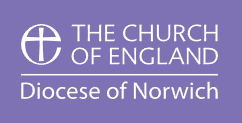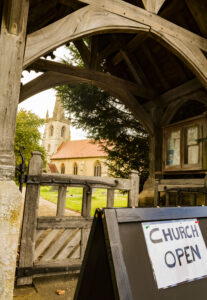Do churches know the number of visitors that pass through their doors? That is the question being asked by the National Churches Trust as they launch the Great Church Visitor Count, a research project which will see 40 digital counters installed at parish churches and chapels in England and Wales.
Unlike cathedrals, museums and historic houses, there is no reliable data on the number of people who visit churches each year. At the moment the only data gathered is from the entries recorded in visitor books and of people who attend services. These are thought to be seriously underestimating the number of visitors and tourists who visit churches and chapels.
The Great Church Visitor Count will analyze the difference between the number of entries recorded in a church visitor book and the actual number of visitors who pass through the door.
The National Churches Trust has already installed ten counters in churches including: St Peter at Heversham, Cumbria; St James at Jacobstowe, Devon; St Matthews at Skegness, Lincolnshire; St Mary at Lydiard Tregoze, Wiltshire and St Augustines at Hedon, Yorkshire. A further 30 counters will be installed at churches and chapels in Wales and Herefordshire later in 2019.
Churches and chapels will monitor and record the number of visitors they have over two years, with initial results of the research being released in 2020 and a full report in 2021.
To increase the range of data available, the National Churches Trust is asking churches to install their own digital counters and to collaborate in the research project. Any churches that already have digital counters are also invited to share their data with the research project.
National Churches Trust Chief Executive Claire Walker says:
“We know that millions of people visit parish churches each year, but although data on the number of people going to church services is available, there is no accurate recording of other visitors.”
“Our Great Church Visitor Count project will help churches in a number of ways. Accurate visitor numbers will help support grant applications from churches for repairs to funders such as the National Heritage Lottery Fund.”
“The project will also help provide hard evidence to local authorities and tourist boards that churches attract many people interested in history and heritage and should be a central part of their tourism offer.”
“We urge all churches that already have digital counters in their building to get in touch with us and join in this initiative and for more to install these devices, which cost less than £200. The more churches that can supply accurate visitor data, the more we can show just how extensively these buildings are being visited and how important they are.”
The Great Church Visitor Count project builds on work carried out in 2018 when the National Churches Trust worked with 54 churches in Lincolnshire on the National Heritage Lottery Fund backed ‘Great Interpretations’ project.
Digital counters were installed in 10 of the churches. All recorded a much higher number of visitors on the digital counters than that recorded in visitor books.
At St Lawrence church, Revesby, a remarkable discovery was made about the number of visitors to their locked church when they installed a counter at the porch entrance. Between 1 September and 31 December 2018 the counter recorded 1,729 visits compared to only 49 names recorded in the visitor book.
Revd Andrew Roberts, rector of St Lawrence’s, stated:
“We did not believe that people were really interested on our church. Our doors were closed apart from Sunday services. We installed a counter in the porch entrance and left it for a few weeks to monitor footfall to the church and were staggered at the number of visitors that approached the church door. This evidence persuaded us to open on a regular basis. ”
If you are interested in your church taking part in the Great Church Visitor Count project, please contact Linda Patrick at linda.patrick@nationalchurchestrust.org – the more churches that sign up, the more meaningful the data will be.
All photos are courtesy of the National Churches Trust.


